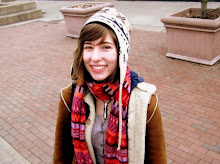Cleveland needs help but they're doing it wrong.
So you've got all the most talented and hip graphic designers in New York City coming up with things like this to seduce LeBron with NYC's confidence and sexiness:

and the best Cleveland can do is come up with a wimpy, desperate-looking OHIO MASCOT that's crying and shaking its fists at its own depressing fate it will never understand?

To top it off, these are the lyrics to the song written by various Ohio politicians and celebrities in the hopes of wooing LeBron back to Cleveland:
There comes a time, when a decision must be made
Will the King, move on or will he stay?
We're helplessly waiting, as we hold our breath in fear.
Should we renew, our tickets for next year?
Please stay LeBron, We really need you
No bigger market's gonna love you half as much as we do
It's a choice you're making, will you go or will you stay.... What will we do with that big sign, if you move away?
Just tell us King, what changes we must make, We'll rename every street 'LeBron' if that's what it takes....
New York's overcrowded, Those people are unbearable, And don't forget, the Knicks and Nets are terrible....
Please stay LeBron, we really need you, No bigger market's gonna love you half as much as we do
http://www.youtube.com/watch?v=Lp487g147SM
COME ON CLEVELAND, we know you have talent and wit hidden somewhere...but really this has become a moaning and groaning clowntown, and every time I read those lyrics I cringe.

and the best Cleveland can do is come up with a wimpy, desperate-looking OHIO MASCOT that's crying and shaking its fists at its own depressing fate it will never understand?

To top it off, these are the lyrics to the song written by various Ohio politicians and celebrities in the hopes of wooing LeBron back to Cleveland:
There comes a time, when a decision must be made
Will the King, move on or will he stay?
We're helplessly waiting, as we hold our breath in fear.
Should we renew, our tickets for next year?
Please stay LeBron, We really need you
No bigger market's gonna love you half as much as we do
It's a choice you're making, will you go or will you stay.... What will we do with that big sign, if you move away?
Just tell us King, what changes we must make, We'll rename every street 'LeBron' if that's what it takes....
New York's overcrowded, Those people are unbearable, And don't forget, the Knicks and Nets are terrible....
Please stay LeBron, we really need you, No bigger market's gonna love you half as much as we do
http://www.youtube.com/watch?v=Lp487g147SM
COME ON CLEVELAND, we know you have talent and wit hidden somewhere...but really this has become a moaning and groaning clowntown, and every time I read those lyrics I cringe.

















